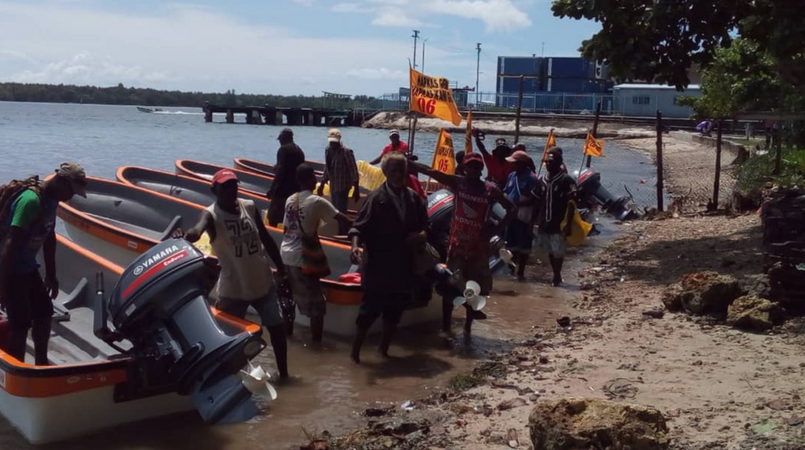
PNG is not doing enough to support its key water transport infrastructure.
This was the statement issued by the Kavieng District Development Authority at the grand launching of several banana boats and 40 HP engines at Bagail beachfront in Kavieng town last Thursday.
Shadow Treasurer and Member for Kavieng, Ian Ling-Stuckey, said water transport received only K13 million in 2017, only 2 percent of all transport sector spending, while road transport received 81 percent and air transport 17 percent of transport funding.
“The term maritime province in PNG is very much misunderstood by our own people and even leaders. Many citizens often think of maritime provinces as only those provinces on an island, surrounded by water.
“Most are not aware that there are 14 provinces in PNG with an ocean border representing almost 64 percent of all provinces.
“These 14 provinces make up three of the four regions in PNG, namely New Guinea Islands, Momase and Southern regions.
“Based on the 2011 national population census, New Guinea Islands represents 15 percent, Momase 26 percent and Southern 20 percent of the country’s population.
“Added together, maritime provinces and those with a common border with the ocean represent about 61 percent of the population or approximately 4.4 million citizens.
“Yet there seems to be a disproportionate allocation of infrastructure spending on national and provincial roads of K609 million in 2017 for example, and K127 million on airports, compared to permanent vessels, wharves, jetties and light-houses of only K13 million,” said the Shadow Treasurer.
“The PNC issued a National Transport Strategy 2014 to 2018 but once again it was just filled with nice words but which have not followed through into concrete actions.
“The strategy claims that it learnt the lessons from the earlier transport strategy that there is a ‘need for balanced development across the whole of the transport network from main arterial routes and gateway ports down to local access roads and minor jetties and airstrips; the transport system will not perform well if the primary network is funded at the expense of feeders, ….. A whole-of-network view is required that overcomes the compartmentalisation between the responsibilities of the national transport agencies and the responsibilities of provinces and LLGs’.
“Giving only 2 percent to the water transport sector clearly is not ‘balanced development’ or ‘whole-of-network’ view. Indeed, in its suggested funding requirements, the National Transport Strategy plan indicated it would need over K200m per year for water transport infrastructure from 2011-2015, or 12 percent of total transport sector funding.
“Clearly the central government is failing both in terms of overall levels of funding and having a balanced approach. Yet, sadly, there has been no national discussion nor debate on these inequities effecting what is in fact, the majority of our countries population,” said Ling-Stuckey.
“As a result, most if not all, maritime Members of Parliament, are forced to take the easy way out and supply temporary dinghies, which are relatively unsafe and costly to maintain, compared to larger permanent vessels.
“A national government led by the National Alliance would immediately review, update and properly fund a fairer national policy on sea and water transport infrastructure, working closely with the relevant national government departments and other key stakeholders,” said the Shadow Treasurer in a statement.
Meantime, the banana boats and HP engines were valued at K201,510.
